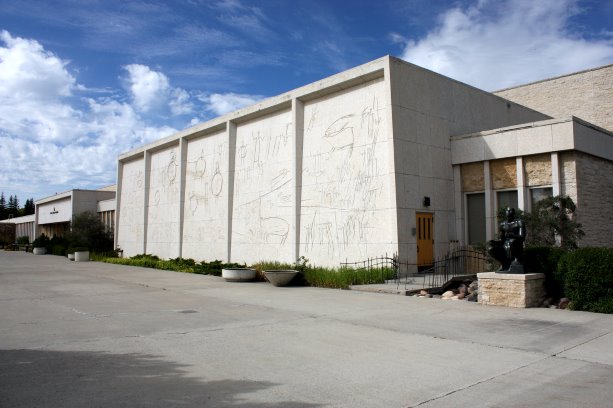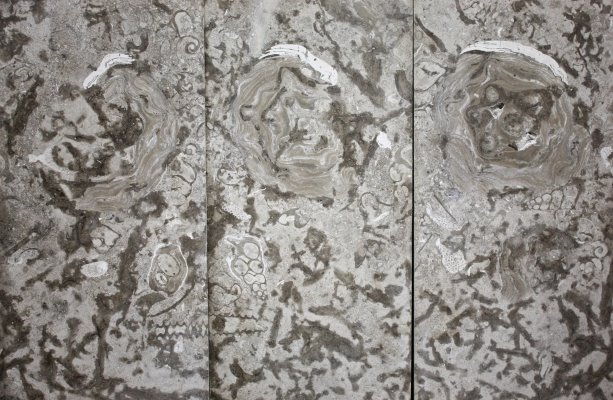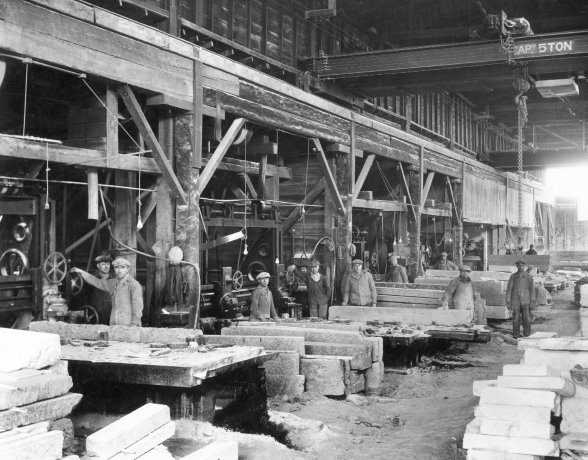The story of Manitoba’s iconic Tyndall stone goes back much further than 1823, when the Hudson’s Bay Company first saw an unusual limestone deposit along the banks of the Red River near Selkirk.
It goes further back than 1898 when William Garson opened the first large quarry to supply the construction industry.
It started 450 million years ago when the province was part of a warm sea near the equator. Organisms, corals, sponges, gastropods, trilobites and algae burrowed through the muddy seafloor seeking food and refuge from predators.
Those burrowing patterns, now deposited with dolomite, created the rare and unique limestone, known as Tyndall stone, that was used on buildings in Manitoba and throughout Western Canada.
"It is so common in Manitoba that it is not always recognizable," said architectural researcher Abi Auld.
For about two years, Auld, with the support of the Winnipeg Architectural Foundation, has been cataloguing buildings with Tyndall stone and tracking its spread across the country. She began the project after finding out no such research or catalogue existed for the stone.
In 1914, several quarries were cutting the stone and shipping it out to builders via locomotives at the Canadian Pacific Railway depot in Tyndall, Man. The last project supplied by rail was the Museum of Civilization in 1989.
Auld explained with the name Tyndall on shipping documents, builders began to refer to it as such.
"There is no other limestone like it in Canada," said Auld. "It is so visually recognizable. It’s a material that signifies the region and the architecture of the region."
Tyndall Stone was first used in 1823 by the Hudson’s Bay Company for building Lower Fort Garry near Winnipeg.
"Really it was the beginning of early permanent buildings in the area," said Auld.
Its use can also be seen in the Winnipeg Art Gallery, Manitoba Legislative Building and the Manitoba Hydro Tower. But soon its use spread beyond the province.
It can also be seen on the Parliament Buildings in Ottawa, the Saskatchewan Legislative Building in Regina, the Federal Public Building in Edmonton, the Canadian Museum of History in Gatineau, the Empress Hotel in Victoria and les Apartements Le Chateau in Montreal.
Auld said she has been able to track much of its use by researching business connections across Canada. She believes that not only was the unique pattern probably desirable, but the quality of the limestone and the early development of large Manitoba quarries probably boosted its spread.
Early Tyndall buildings used it as structural stone but its main contemporary use is cladding. On some projects, like the Federal Building in Edmonton, the masonry firm devised a method to take old Tyndall cladding and slice it to clad a new addition to the structure so more stone didn’t have to be quarried.
Today, Gillis Quarries is the sole provider of Tyndall stone. Auld said only 20 per cent of all the Tyndall stone has been quarried.
Gillis uses eight-foot diamond tipped quarry saws run on 100-foot tracks to cut three feet into the Tyndall stone beds. After the saw cuts are made, the stone in the divided strips is raised from the deposit with wedges and then split into six or eight tonne blocks by drilling and wedging. Front end loaders are used for removal, storage and delivery of the blocks to the processing plant.
Auld has spent the past two years researching and travelling throughout Western Canada for the book. This allowed her to get a better inventory of buildings and access provincial archives in small towns. She also plans to do an exhibition on the stone.
"It has been very satisfying to be able to trace the spread and figure out the business connections," said Auld. "I hope at a basic level it can be a main resource of what the stone is and what has been built so far because that doesn’t exist and I think it’s important."
She also hopes learning about the building material Winnipeggers pass each day will remind them of the long journey it has been on.
"Tyndall has a connection with a place and time so beyond ourselves," said Auld. "I think that is what is behind the sense of wonder with fossils."

1/2
Photo:











Recent Comments